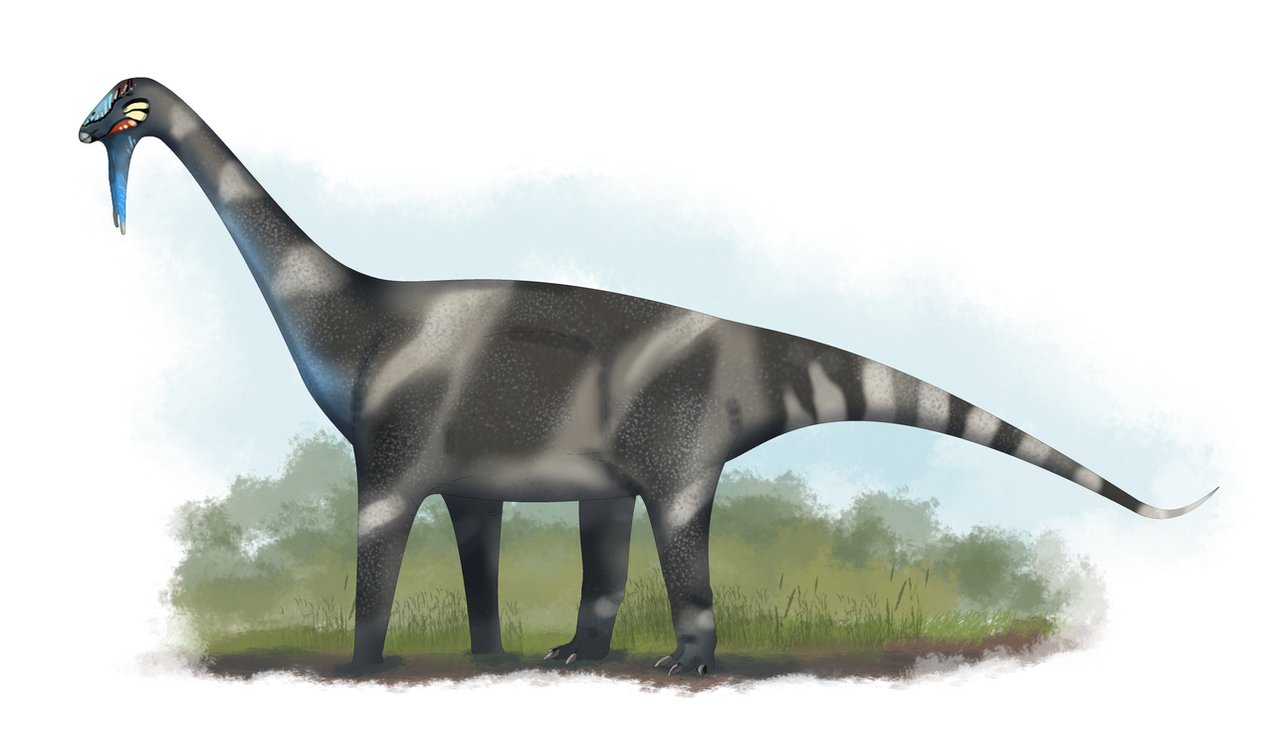HOME | DD
 DrPolaris — Yuzhusaurus magnificus
DrPolaris — Yuzhusaurus magnificus

#animal #dinosaur #speculativefiction #speculativeevolution #speculativezoology
Published: 2022-11-26 00:05:02 +0000 UTC; Views: 10344; Favourites: 157; Downloads: 9
Redirect to original
Description
Like the Caenodromaeosaurs, Seismotitanids originated in Africa during the Oligocene (with the oldest, scrappy fossils hailing from Kenya and Ethiopia in approximately 30 million year old deposits) and successfully spread into Eurasia and North America during the first half of the Miocene. Huge graviportal browsers and grazers, these were essentially Sauropod-mimicking Ornithischians that proved wildly successful, marginalizing Eurasia's Titanosaurs into increasingly specialized niches. North America lost its Titanosaurs during the Paleogene, with the Seismotitanids receiving little to no competition on the continent. Among the first sub-families to become well established here were the Xiangosaurines, a mostly browsing lineage that first appeared in China during the Middle Miocene roughly 18 million years ago. Like many members of the sub-family, Yuzhusaurus ranged widely across eastern Eurasia and North America. The species found at the Optima site, Y. magnificus, was the largest so far known, measuring up to 17m long and weighing at least 16 tonnes. With a narrow elongated snout, powerful neck and wide torso, this was a high browsing specialist that fed on the choicest of leaves that few other animals could reach. Adults would have been largely immune to predation, although juveniles and adolescents were vulnerable to Titanoraptorids. Xiangosaurines thrived in North Africa, Eurasia and the Americas from the Miocene to the Middle Pleistocene, when environmental changes led to a reduction in the overall range of the group. In modern times, these browsing herbivores persist only in the Americas, with the the genus Ernestotitan inhabiting the southern United States and the xeric open forests of northern Mexico, while the larger Bosquetitan is present across much of temperate and tropical South America, from Colombia in the north to coastal Uruguay in the south.Art by Sheather888.
Related content
Comments: 11

👍: 1 ⏩: 1

👍: 3 ⏩: 0

👍: 2 ⏩: 1

👍: 1 ⏩: 0

👍: 0 ⏩: 1

👍: 0 ⏩: 1

👍: 0 ⏩: 0

👍: 0 ⏩: 1

👍: 2 ⏩: 0

























